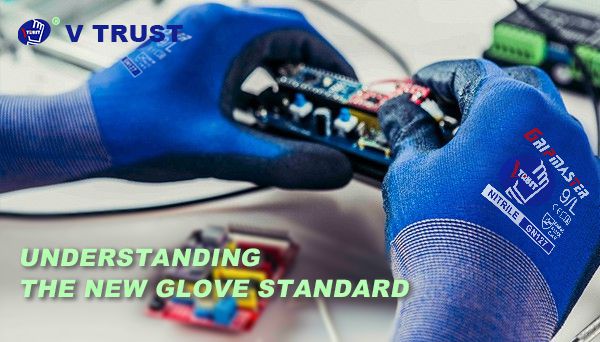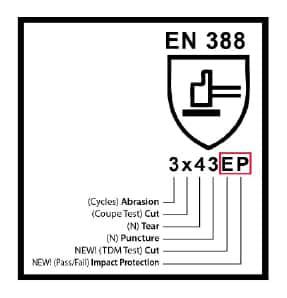
You may have heard about the new glove standard but not quite sure what it means or how it’s going to affect you. Let’s unpack what’s changed by comparing the old to the new,
discussing the new testing methods and show you what to expect from the new glove markings.
OLD vs NEW
The new EN388:2016 standard released in November 2016 has replaced old EN388:2003 glove standard in Europe.
Testing on resistance to abrasion, tear and puncture are carried out as they were before with minor clarifications to testing procedures and materials. The test results correspond the same way they did in the 2003 version with ratings of 0-4, with 4 being the highest performance level.
The main difference in the 2016 edition is in relation to cut
resistance and impact protection. The new version now includes a TDM blade test in addition to the existing Coup Method and a test for Impact resistance.
Existing Cut Test – Coup Method:
Under the EN 388 glove standard, introduced in 2003, cut resistance is measured with a Coup Test machine. A section of fabric is placed in a holder and a rotating circular blade is moved back and forth at a constant speed, pressing down with a force of 5 Newtons. When the blade cuts through, a performance rating from 1 to 5 is calculated from the total distance of travel. The blade gradually loses sharpness, so at the start and finish it is calibrated using cotton fabric. Therefore, the result can be less accurate for gloves with a higher cut-resistance. This test method remains in the 2016 version but is only to be used for materials that do not affect the sharpness of the blade.
Additional New Cut Test – TDM blade test:
TDM is an abbreviation for the equipment used to conduct this test, a tomodynamometer. This test involves a straight blade being drawn across the sample in one movement, with a new blade every time. The ‘stroke length’ before cut-through is recorded for a range of forces and graphs plotted to predict the force required to cut through the glove in 20mm of travel. This force is used to calculate a score from A to F, with F being the highest rating.
Impact Testing
Impact verification has been added to EN 388: 2016. The test method is taken from the motor cycle standard EN 13594:2015. The area where the impact protection is claimed to be tested, but due to technical reasons, the area around the fingers
cannot be tested.
If the requirements are fulfilled, the glove will be marked with a P (Pass). If a fail, there will be no marking.
How does this affect your current gloves?
EN 388:2016 supersedes EN 388:2003 BUT it only affects new product certification and will not apply retrospectively.
Gloves may continue to be sold under both versions of the standard until 2023 when, under the new PPE regulation, certification will need to be renewed to the latest version of the standard.
GLOVE MARKINGS




 English
English 中文
中文 Deutsch
Deutsch Español
Español Português
Português 日本語
日本語 русский
русский